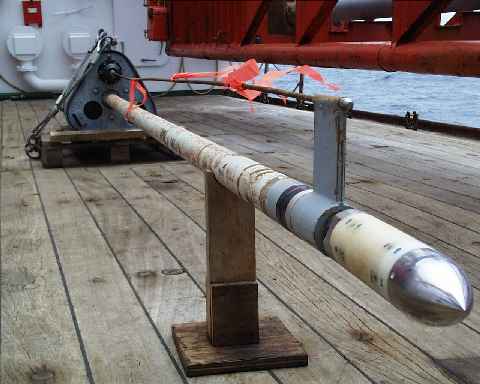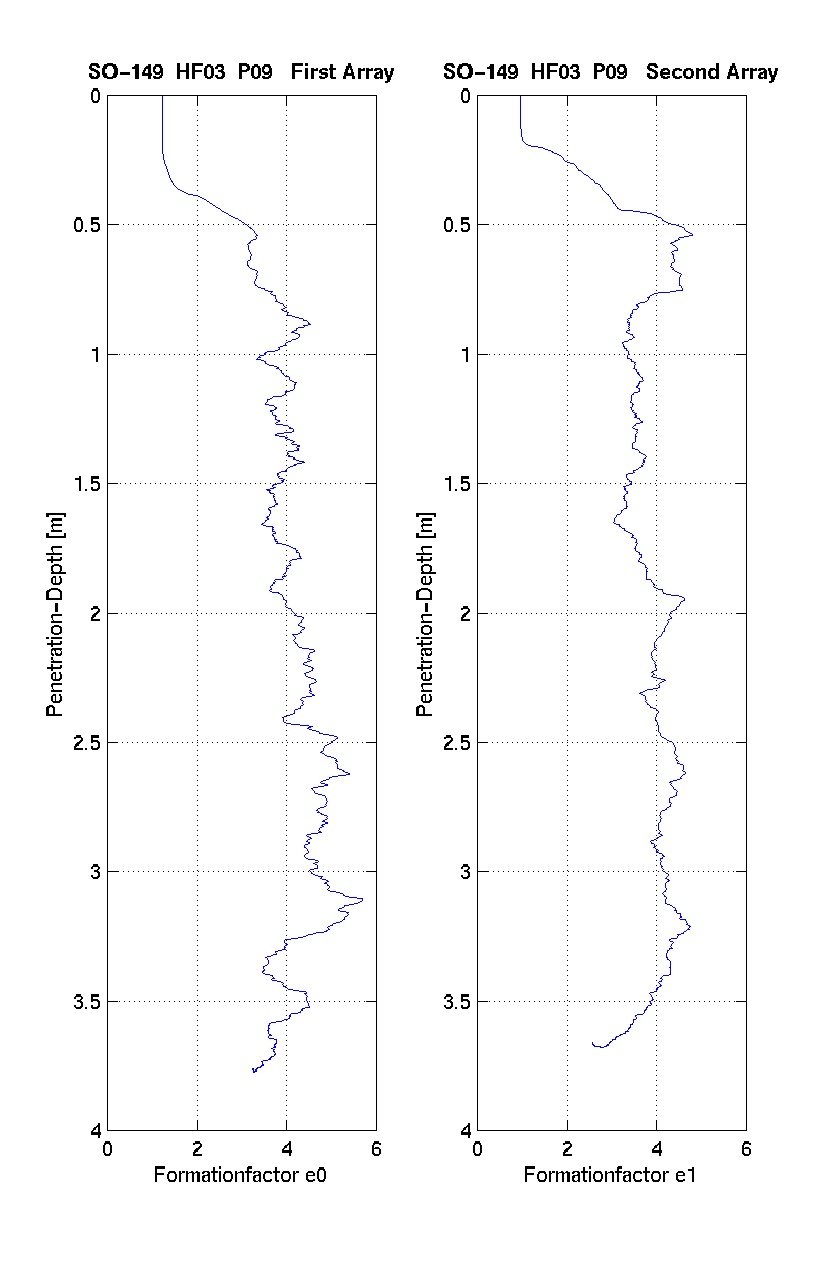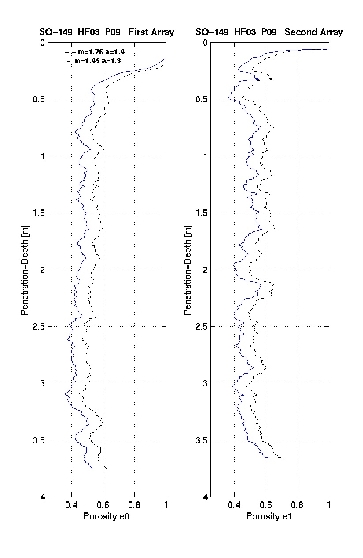







 |
   |
|
||




|
||||
Section Meerestechnik/Sensorik |
 
|
||||
|
|
|||||||||||||||||
|
|
   |
Project Geoelectric: The electrical properties of deep sea sediments are linked to other physical properties through a series of empirical relationships. They allow the calculation of thermal conductivity from porosity which is derived from electrical resistivity using Archie's Law. In order to complement in situ thermal conductivity measurements made with our violin-bow type heat probe, we designed and built a sensor which is attached to the tip of our probe and allows to measure a continuous profile of electrical resistivity - and therefore porosity and calculated thermal conductivity - as the heat probe penetrates the seafloor. The operating principle of our sensor is based on two identical 4-point electrode arrays arranged on the circumference of the sensor tip and separated by 10 cm. They are mounted in an electrically insulating, highly abrasion resistant plastic material. Both arrays are operated independently. A DC constant power source delivering 10 mA is reversed with a frequency of 1000 Hz to provide a 500 Hz alternating rectangular waveform current. The resulting signal at the electrodes is measured in a time- multipexed fashion with a final frequency of 250 Hz. Data are digitized and stored on a hard drive under control of a Tattletale data logger. Penetration is monitored by a pressure and acceleration sensor. The signal of the latter is used to convert the recorded electrical signals from time to depth. The measurements were made during cruise SO-149 on the German research vessel RV Sonne. Our data show that we are able to measure high resolution resistivity profiles over a depth range of 3 - 4 m which allow to characterize the overall porosity of the sediments and to identify turbidite layers present everywhere in Cascadia Basin. The calculated porosities are compared with existing porosity data from the same area. The developed instrument worked very reliably and delivered data of very good quality. Of course the sensor and its electronics can also be used separately for spatially detailed geotechnical work in shallow water. |
|
||||||||||||||
| Author: Dr. Norbert Kaul | ||
© Universität Bremen - Fachbereich Geowissenschaften Klagenfurter Str., D-28334 Bremen - Tel: +49 421 218 4510 |